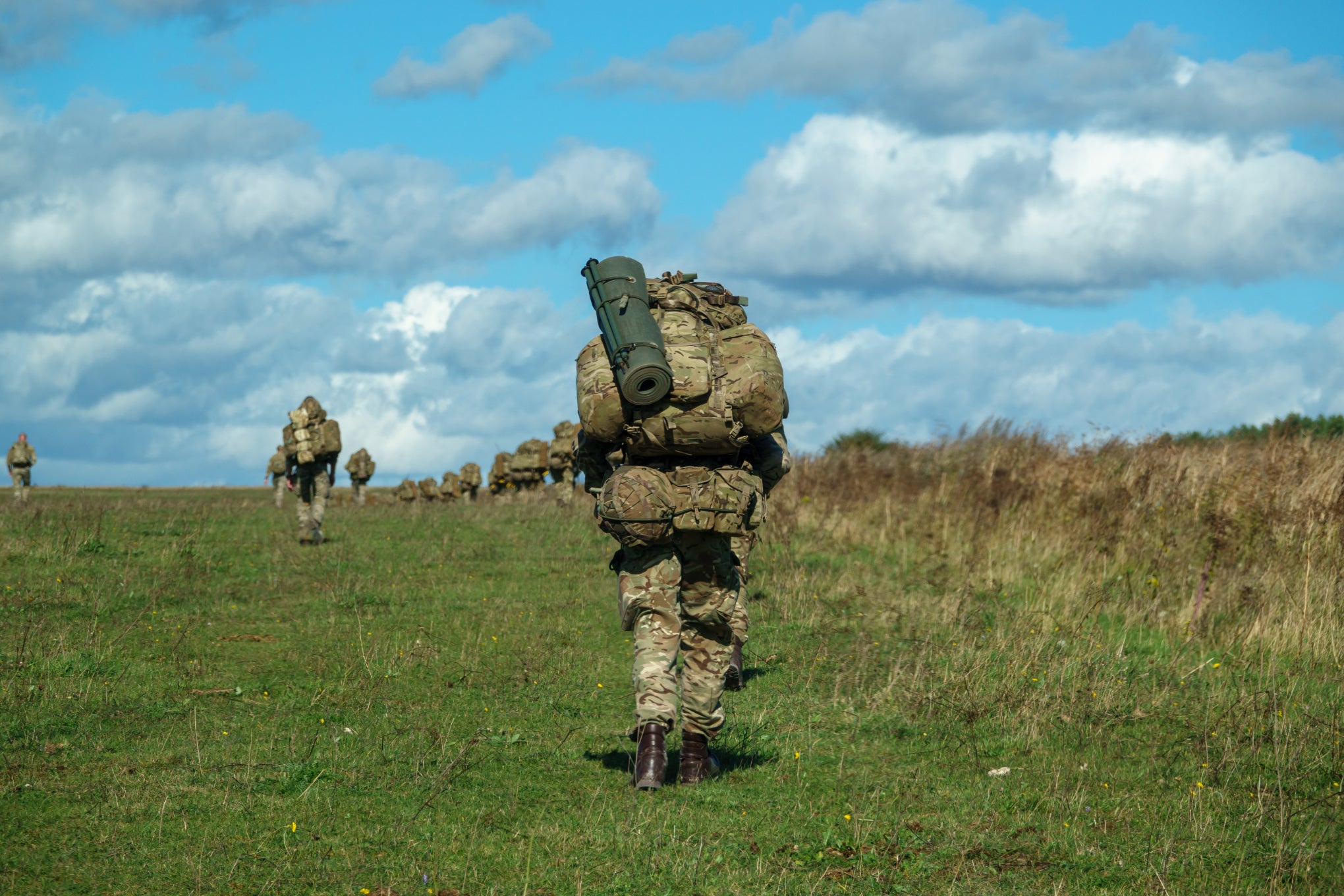
The History of Tabbing – Endurance & Discipline Born from the British Military
In previous posts, we looked at the difference between tabbing and rucking and although there are a lot of similarities between these two terms, tabbing is the origin for this growing exercise. So whether you call it tabbing or rucking, we’re going to understand where it came from and why it’s becoming more and more popular.
Whereas rucking is a term more commonly used by the U.S. military, tabbing is a British military term, particularly used by elite units like the Parachute Regiment. It stands for “Tactical Advance to Battle” and is specifically designed to simulate military manoeuvres, often with heavy loads and over rough terrain. It’s usually done at a faster pace than rucking and often includes tactical considerations, like moving as a unit, staying alert, and preparing for combat situations. It evolved from the military need to move troops quickly and efficiently across difficult terrain while carrying heavy equipment and provides a compelling challenge for anyone who feels they could do it themselves!
Military Necessity
In response to the demands of infantry warfare, where soldiers needed to move from point to point, often over rugged terrain, while carrying essential equipment like weapons, ammunition, rations, and survival gear, tabbing evolved. It became an effective solution to situations where vehicles were unavailable or impractical, moving on foot with speed and agility became crucial.
The British Paras are one of the primary units associated with tabbing. As an airborne regiment, their operations involved parachuting into hostile or isolated areas, meaning they had to rely heavily on their ability to move quickly and independently on foot, carrying all necessary supplies. This meant soldiers had to be highly conditioned for long-distance marching with heavy loads, thus leading to the development of tabbing.
Training & Discipline
Tabbing became an essential training exercise for the British Army to build the physical endurance and mental resilience needed to carry out long missions. Soldiers were often required to tab for miles with heavy bergens (rucksacks) as part of their training regimes. The famous "10-miler" is a key event in the training of British paratroopers and other infantry units.
This exercise prepared soldiers for battlefield conditions, where rapid movement in full combat gear might be required. The exercise taught soldiers how to maintain stamina, keep their kit organised, and stay operational over long distances, often at a fast march or near-jog pace.
Elite Training Regimens
Tabbing was further popularized by elite forces like the Special Air Service (SAS), whose selection process is notorious for requiring long marches over mountainous terrain, known as "the hills phase." Candidates are expected to tab over rough terrain with heavy weights, emphasizing endurance, navigation skills, and mental toughness. These tests pushed the boundaries of tabbing as both a physical and psychological challenge. Over time, the benefits of tabbing were recognised, and it became a standard training exercise, not just for elite units but for regular infantry as well.
From Military Origins to Modern Training
While tabbing began as a purely military exercise, its methods have influenced modern fitness trends and functional training approaches, particularly among those interested in military-style conditioning. The principles of strength, endurance, and mental toughness that tabbing builds are valued not only in military circles but also in civilian fitness groups, which has helped give rise to practices like rucking in other countries.






